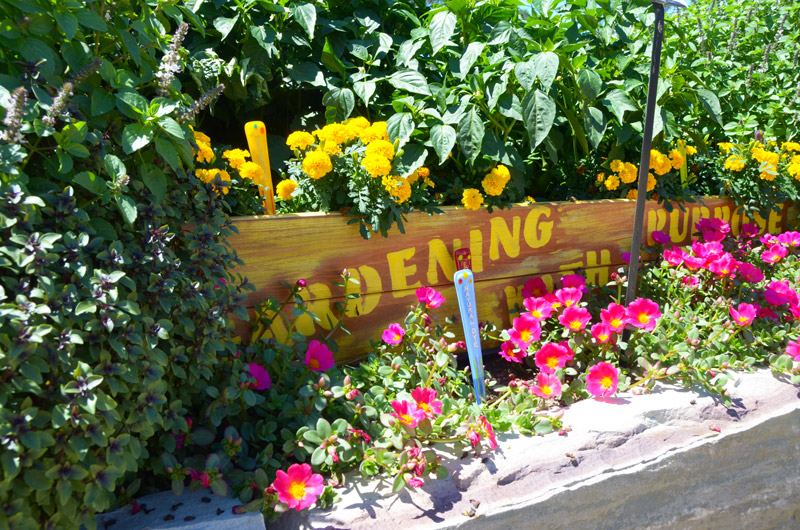Things about Hilton Head Landscapes
Things about Hilton Head Landscapes
Blog Article
Hilton Head Landscapes - An Overview
Table of ContentsSome Known Questions About Hilton Head Landscapes.Hilton Head Landscapes - The FactsThe smart Trick of Hilton Head Landscapes That Nobody is Talking AboutExcitement About Hilton Head LandscapesSome Ideas on Hilton Head Landscapes You Need To KnowThe 10-Second Trick For Hilton Head LandscapesThe 8-Minute Rule for Hilton Head Landscapes
Line develops all types and patterns and can be used in a selection of methods the landscape. Line in the landscape is created by the side in between two products, the synopsis or shape of a type, or a long straight function. Lines are a powerful tool for the developer because they can be made use of to produce a limitless variety of forms and kinds, and they manage activity of the eye and the body.

Lines in the landscape. The residential or commercial properties of lines establish how individuals respond to the landscape, both mentally and literally.
Fascination About Hilton Head Landscapes
Straight lines are frequently found in hardscape edges and product. Bent lines create an informal, natural, loosened up personality that is associated much more with nature and asymmetrical balance. Rounded lines relocate the eye at a slower pace and include enigma to the space by developing concealed sights. Upright lines relocate the eye up, making an area really feel larger.
Vertical lines in the landscape consist of high, narrow plant material, such as trees, or tall structures, such as an arbor or a bird home on a pole. Horizontal lines relocate the eye along the ground plane and can make an area feel larger. Reduced lines are more subdued and develop a sensation of rest or repose.
Little Known Facts About Hilton Head Landscapes.
Low lines are produced by reduced garden walls, sidewalks, and short bushes. Lines are used to attract forms on a plan. In plan sight, they define plant beds and hardscape locations. Lines are also developed by the vertical types of constructed features and plant product. There are three key line types that produce kind in the landscape: bedlines, hardscape lines, and plant lines.
Bedlines connect plant material to your house and hardscape because the eye adheres to the line, moving the look via the landscape. Hardscape lines are created by the edge of the hardscape, which marks the built structure. Line can additionally be produced by lengthy and narrow materials, such as a fence or wall.
Hilton Head Landscapes Can Be Fun For Anyone
Form is found in both hardscape and plants, and it is typically the dominant visual element that spatially organizes the landscape and frequently identifies the style of the garden. The kind of frameworks, plant beds, and yard ornaments additionally determines the overall form theme of the yard. Formal, geometric types include circles, squares, and polygons.
Plants create form in the yard with their details or silhouettes, however type can likewise be defined by a void or adverse room in between plants - bluffton landscaping (https://sketchfab.com/h1tnhdlndscps). Circles can be cycles, or they can be split right into fifty percent circles or circle sectors and incorporated with lines to create arcs and tangents
An Unbiased View of Hilton Head Landscapes
Circles can also be stretched into ovals and ellipses for even more variety and interest. Circles are a solid design kind because the eye is constantly attracted to the center, which can be made use of to highlight a prime focus or link other types. Figure 2. Round types in hardscape and lawn panels.
The square form can additionally be fractional and secondhand consistently to produce a grid pattern. Unlike circles, squares are more powerful on the edges, which can be aligned or overlapped to produce one-of-a-kind patterns and even more complicated types. Polygons are many-sided forms with straight sides. Triangulars, as an example, are three-sided polygons.
Meandering lines often resemble the all-natural course of rivers or streams and can be explained as smooth lines with deeply bent wavinesses. Twisting lines (Number 3) function well for paths, plant bedlines, and completely dry stream beds. Twisting lines can include passion and mystery to a garden by leading viewers around corners to find brand-new sights and rooms.
More About Hilton Head Landscapes

Figure 5. Fragmented edges: stepping rocks in pathway. Type is the most long-lasting high quality of a plant (landscapers hilton head island). https://yoomark.com/content/family-owned-and-operated-hilton-head-landscapes-has-been-serving-beaufort-county-over. Common plant kinds are well established and standardized, as kind is the most consistent and identifiable attribute of plants. Type can also be developed with the massing of plants, where the general mass creates a various type than an individual plant.
A very contrasting kind needs to be used with careone or more job well as a prime focus, yet way too many wreak havoc. All-natural plant types, rather than over-trimmed kinds, ought to establish the mass of the structure. The importance of overall type is much more or much less dependent on the watching perspectivethe form of a tree can show up fairly different to an individual standing under the canopy versus checking out the tree from a range in an open field.
Hilton Head Landscapes Things To Know Before You Get This
Plant types additionally create and define deep space or open areas in between the plants, developing either convex or concave types in deep spaces. High-arching tree branches normally produce a concave open room under the branches, and a round cover with reduced branches loads the space to create a convex form in the open area under the tree.

Report this page